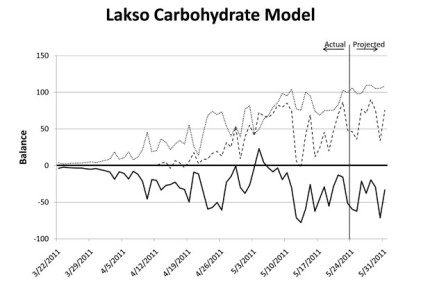

Jul 5, 2011New model may predict fruit set for apples
Growers have long faced the dilemma of predicting fruit set when it comes time to thin. Researchers have been looking at different paths to predicting set and are looking at the carbon balance in the tree for answers.
Alan Lakso at Cornell University has developed a carbohydrate balance model for apple, which Jim Schupp from Penn State University has been testing for predicting fruit set. This model estimates carbohydrate supply and demand and calculates the carbon balance of the trees.
During times of high supply and low demand (sunny and cool), the balance is positive and it is difficult to thin chemically, according to Schupp. When the balance is slightly negative (0 to minus 20˚ F), chemical thinning becomes easier. When the balance drops to the range of minus 40˚ F, the trees are under significant carbohydrate stress and chemical thinning will be strong. Below minus 40˚ F, the natural stress may be so severe that some fruits will be shed even when thinners aren’t used. Below minus 40˚ F, the response to chemical thinners is predicted to be very strong.
Recent results have been positive. Schupp ran the model based on weather data for upper Adams County in Pennsylvania. It shows several windows of carbohydrate stress in May 2011, when thinning may have been very strong.
On May 24, Schupp’s team entered weather predictions for the following week. The model predicted that there would be a large block of time over the next several days when the fruit would be very sensitive to chemical thinning. The reason for the sensitivity was due to higher temperatures.
“The model is still experimental, but I believe it reflects stresses that affect fruit set,” Schupp said. “While some blocks would still need to be thinned, growers were advised to monitor the weather forecast, to carefully re-assess the need to thin and to consider reducing the strength of the thinner tank mix.”
Effects of short- and long-term climatic variation and foliar pests were modeled with an improved version of Lakso’s apple tree carbon balance model. Schupp developed sub-models on spring leaf area development and autumn leaf fall, partitioning of carbon within the tree and fruit growth and abscission based on carbon balance.
Simulations of known effects of low light and foliar pest damage on apple fruit growth and abscission were realistic and similar to experimental results. Schupp ran long-term simulations on the leaf canopy for leaf area development, light interception, photosynthesis and respiration for different climates using temperature and radiation data from New York, New Zealand and Washington state.
What did the simulations lead too? They suggest that mid-to-late-season differences were the most distinguishing among climates, and that early season differences were less when expressed as time after budbreak. Simulations of short-term responses to low light and pests and the long-term climatic simulations suggest that the model is correct and can lead to predicting set for thinning and overall tree health, according to Schupp.
By Derrek Sigler














